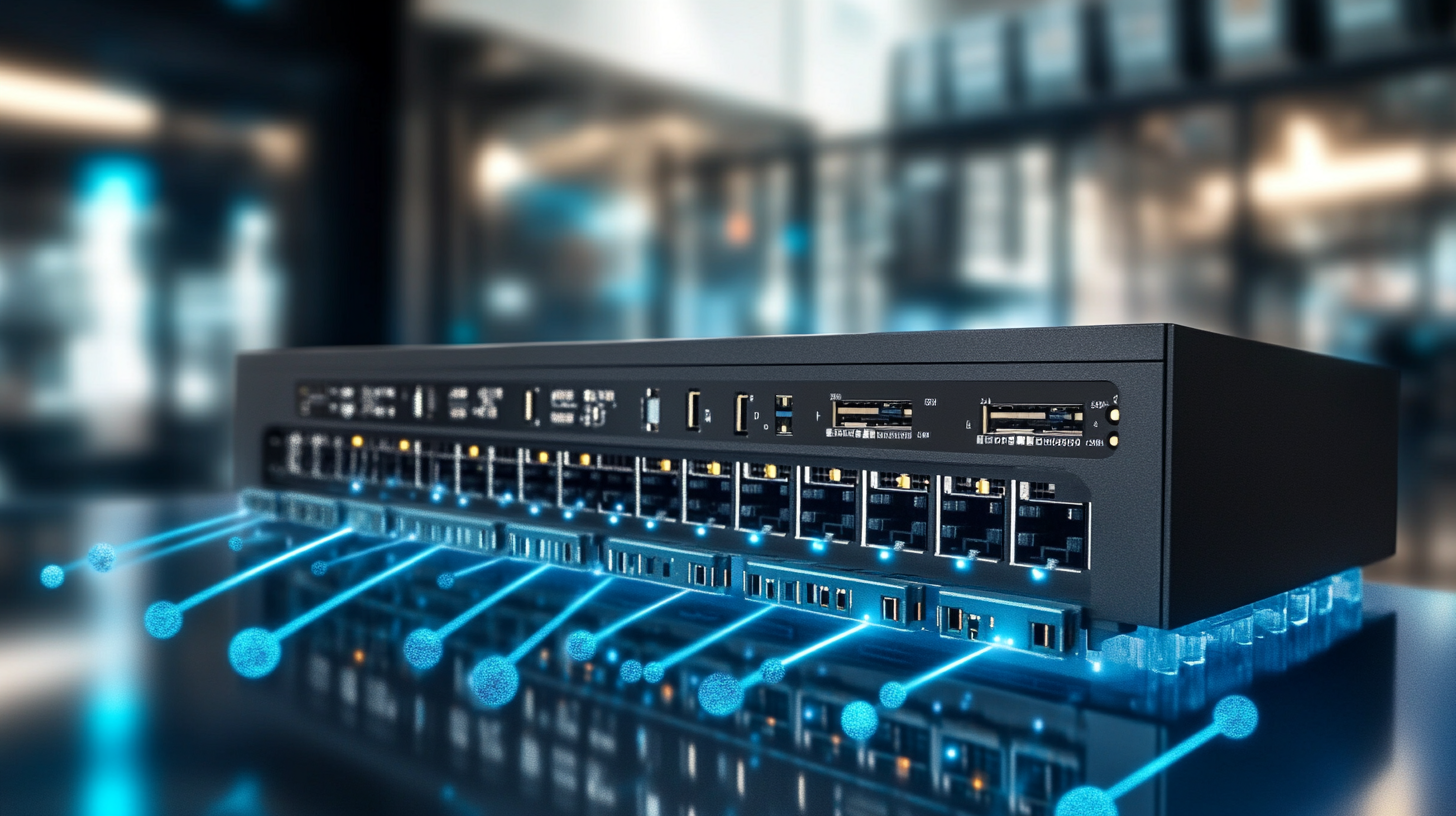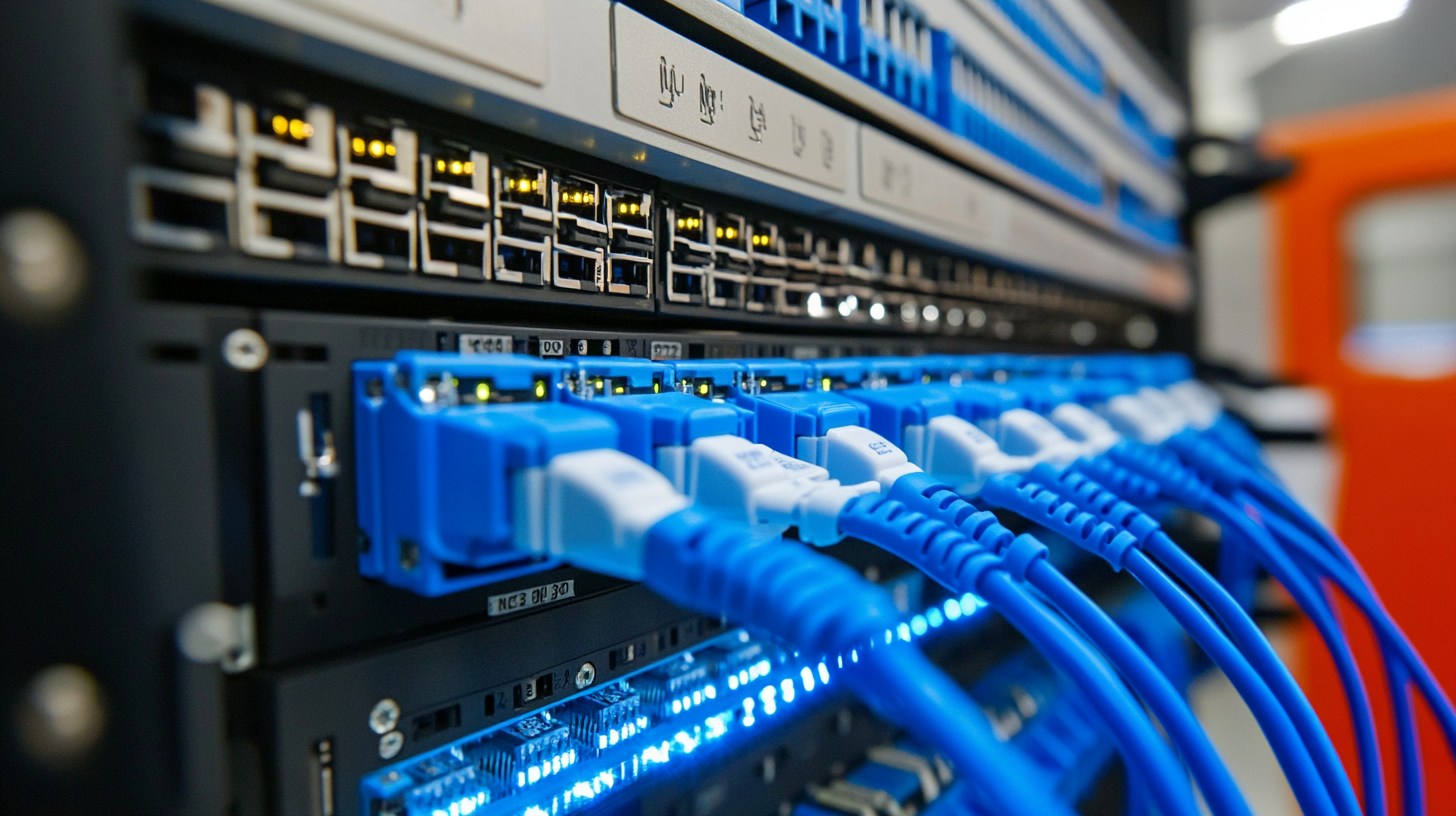
- hasivo@hasivo.com
- Mon - Sat at 7:00AM to 9:00PM
Leave Your Message

 In today's rapidly evolving networking landscape, selecting the right manufacturer for L3 Managed PoE switches is crucial for businesses aiming to enhance their operational efficiency and scalability. According to a recent report by MarketsandMarkets, the global PoE switch market is expected to grow from USD 1.9 billion in 2020 to USD 5.1 billion by 2025, reflecting a robust CAGR of 21.3%. This surge is driven by increasing demand for high-performance network solutions that support advanced applications, such as IoT and smart building technologies. Moreover, with the advent of stringent industry standards and certifications across various regions, choosing a manufacturer that adheres to relevant import-export certifications has never been more critical. By leveraging these insights, organizations can make informed decisions that align with their specific networking needs while ensuring compliance with industry regulations, ultimately leading to sustainable growth and competitive advantage.
In today's rapidly evolving networking landscape, selecting the right manufacturer for L3 Managed PoE switches is crucial for businesses aiming to enhance their operational efficiency and scalability. According to a recent report by MarketsandMarkets, the global PoE switch market is expected to grow from USD 1.9 billion in 2020 to USD 5.1 billion by 2025, reflecting a robust CAGR of 21.3%. This surge is driven by increasing demand for high-performance network solutions that support advanced applications, such as IoT and smart building technologies. Moreover, with the advent of stringent industry standards and certifications across various regions, choosing a manufacturer that adheres to relevant import-export certifications has never been more critical. By leveraging these insights, organizations can make informed decisions that align with their specific networking needs while ensuring compliance with industry regulations, ultimately leading to sustainable growth and competitive advantage.
When evaluating L3 managed PoE switches, understanding the key technical specifications is crucial for making an informed decision. Start with the switching capacity and backplane bandwidth, as these metrics significantly affect data transmission speeds and efficiency. Consider the number of ports available and the maximum power output per port, which are essential for supporting a variety of devices like IP cameras, phones, and wireless access points.
Tip: Always check the Power over Ethernet (PoE) standards supported by the switch, such as IEEE 802.3af (PoE), 802.3at (PoE+), or 802.3bt (PoE++), ensuring that it meets your power requirements for connected devices.
Additionally, take into account the management features offered by the switch. Look for functionalities like VLAN support, Quality of Service (QoS), and security features, which can enhance network performance and security. A switch that provides robust management capabilities allows for better control over network traffic and improved troubleshooting processes.
Tip: Evaluate the user interface and management software of the switch. A user-friendly interface can save time and reduce the learning curve associated with managing your network effectively.

When it comes to enhancing network performance, the significance of managed features in Layer 3 PoE switches cannot be overstated. These switches enable meticulous control over network traffic, allowing administrators to prioritize specific data flows, which is crucial for maintaining efficient and reliable communication. Managed switches support advanced features such as VLANs, QoS, and traffic monitoring, which collectively contribute to a more organized network infrastructure, reducing latency and potential bottlenecks.
Tip 1: Always assess your network's specific needs before choosing a managed PoE switch. Consider factors such as the number of connected devices, types of applications running, and bandwidth requirements to ensure optimal performance.
Another important aspect to consider is the scalability of the managed switch. As businesses grow and evolve, their networking requirements may change substantially. Selecting a manufacturer that offers a range of switches with varying capabilities can ensure that you can expand your network seamlessly without needing complete replacements.
Tip 2: Look for manufacturers that provide robust support and regular firmware updates for their managed switches. This not only secures your network against emerging threats but also ensures you can take advantage of the latest features and performance enhancements.
When considering the best Layer 3 managed Power over Ethernet (PoE) switches, understanding the differences in PoE standards is crucial for optimizing network functionality. The IEEE 802.3af standard, commonly known as PoE, can deliver up to 15.4 watts of power per port, whereas the newer 802.3at standard, or PoE+, increases this capacity to 30 watts. This advancement allows for the support of higher-power devices, such as PTZ cameras and advanced Wi-Fi access points, which are vital in today’s high-performance networks. According to a recent market analysis by Grand View Research, the PoE technology market is expected to grow at a CAGR of over 16% from 2023 to 2030, underscoring the rising demand for enhanced networking capabilities.
With the introduction of the 802.3bt standard, or PoE++, the power delivery reaches up to 60 watts per port in Type 3 and even up to 100 watts in Type 4 configurations. This leap in capability not only broadens the scope of devices that can be powered but also simplifies installations by reducing the need for additional electrical outlets. Research from Technavio indicates that the adoption of PoE technology is being driven by increasing reliance on IoT devices and smart technologies in enterprise and industrial sectors, highlighting the importance of selecting a manufacturer that offers compliance with these evolving standards to ensure robust performance and future-proofing.
 When selecting the best L3 managed PoE switches, assessing build quality and reliability is paramount. A switch’s performance directly ties to its construction materials, design, and manufacturing process. High-quality switches often utilize robust components designed to withstand environmental stressors such as heat and humidity. Pay attention to IP ratings and thermal management features, as these can significantly impact the durability and lifespan of the switches.
When selecting the best L3 managed PoE switches, assessing build quality and reliability is paramount. A switch’s performance directly ties to its construction materials, design, and manufacturing process. High-quality switches often utilize robust components designed to withstand environmental stressors such as heat and humidity. Pay attention to IP ratings and thermal management features, as these can significantly impact the durability and lifespan of the switches.
Tip 1: Look for manufacturers that provide comprehensive product specifications, including not just technical capabilities but also details about materials used. Manufacturers with transparent quality policies indicate a commitment to producing reliable equipment.
Understanding the manufacturing processes can also illuminate a switch's reliability. Manufacturers using automated processes with strict quality control tend to produce fewer defects. Additionally, it’s wise to review customer feedback and industry certifications. A switch with relevant industry certifications demonstrates adherence to rigorous standards, ensuring it meets your operational requirements.
Tip 2: Prioritize brands that offer warranties and support services. A reliable manufacturer will stand behind their products, providing peace of mind and a safeguard against potential failures.
The landscape of L3 managed PoE switches is constantly evolving, driven by advancements in technology and increasing demand for efficient network solutions. One of the latest trends is the integration of artificial intelligence and machine learning, which helps optimize network performance and reduce downtime. As these technologies become more accessible, manufacturers are expected to enhance their products with smarter features that improve user experience and operational efficiency.
Tips for selecting the right manufacturer include evaluating the product portfolio and customer support services. Look for manufacturers who offer a comprehensive range of L3 managed PoE switches with various features tailored to different needs. Additionally, consider manufacturers that provide solid after-sales support and warranty options, as reliable service can save time and money in the long run.
Another vital trend in the industry is the focus on energy efficiency. With businesses increasingly aiming to lower their carbon footprints, choosing a manufacturer that prioritizes eco-friendly designs can be a deciding factor. Research the energy consumption ratings of products and opt for switches that use power-saving technologies, as this not only benefits the environment but can also lead to significant cost savings for your organization.